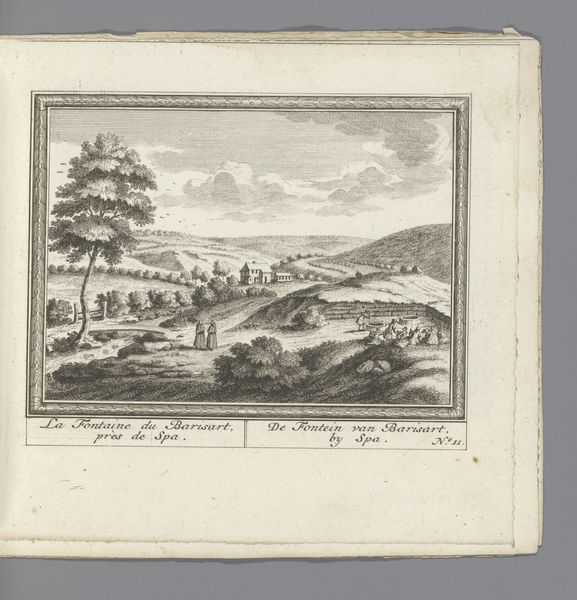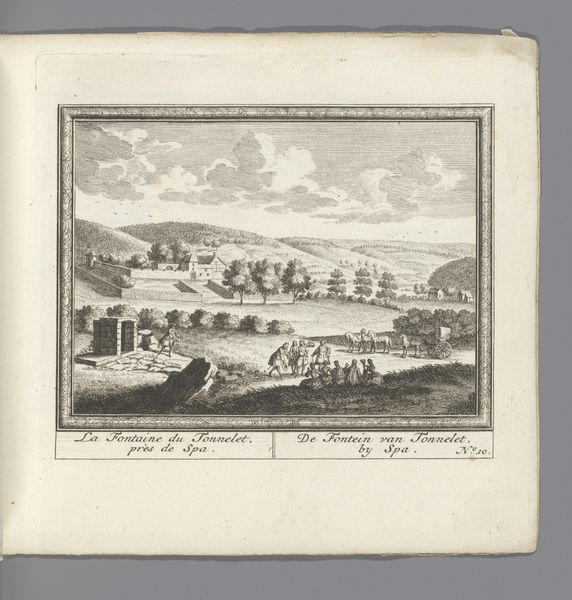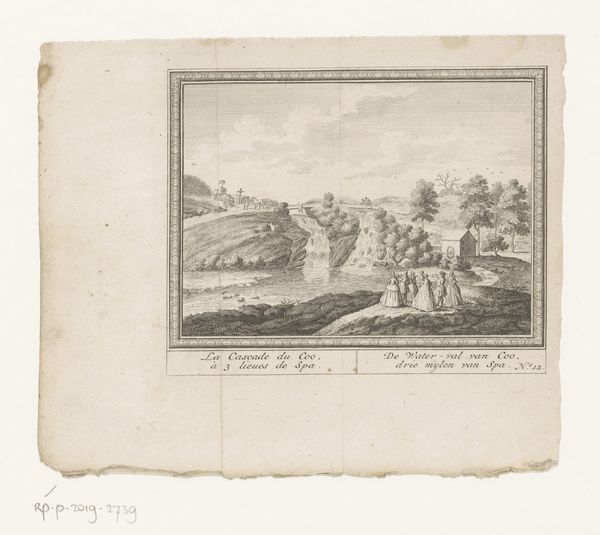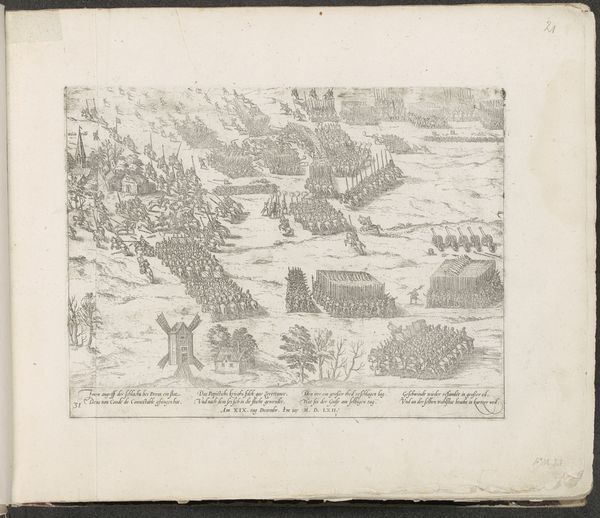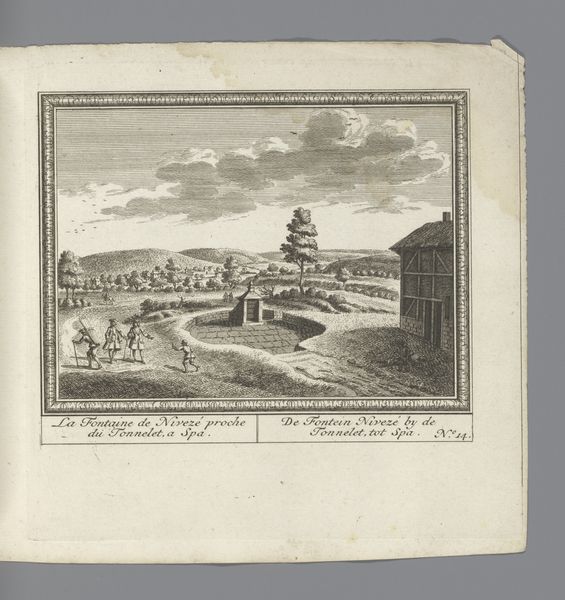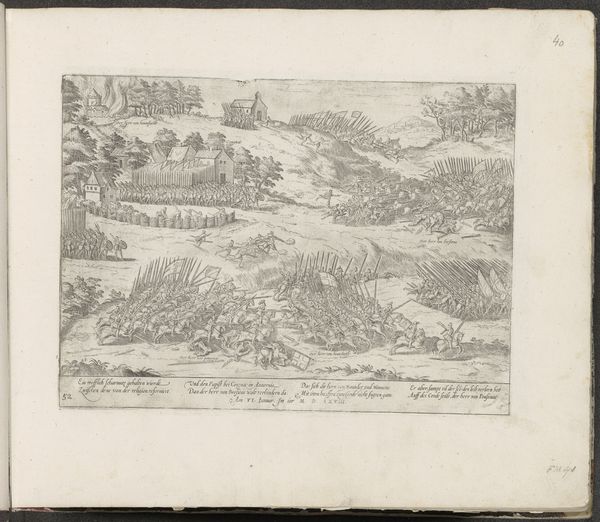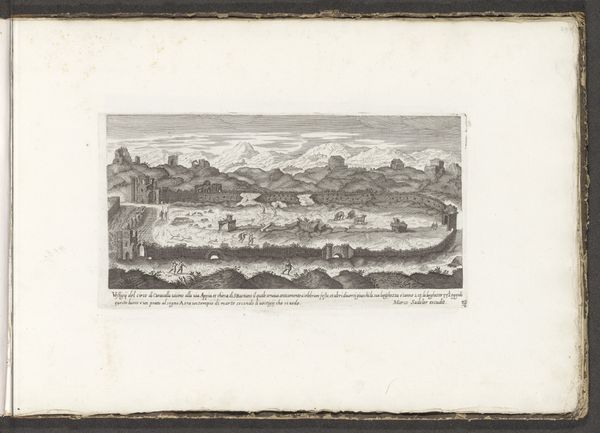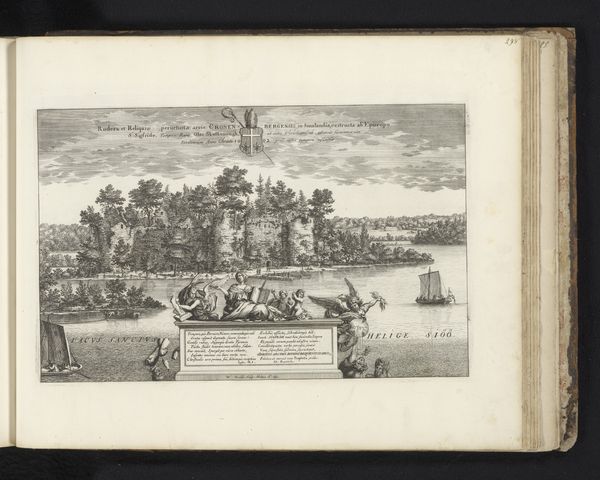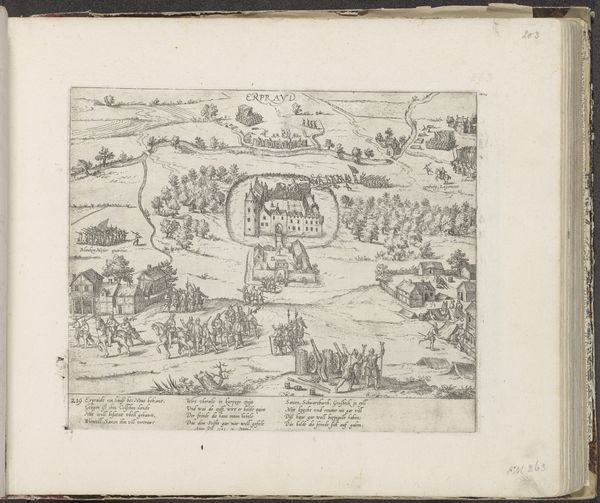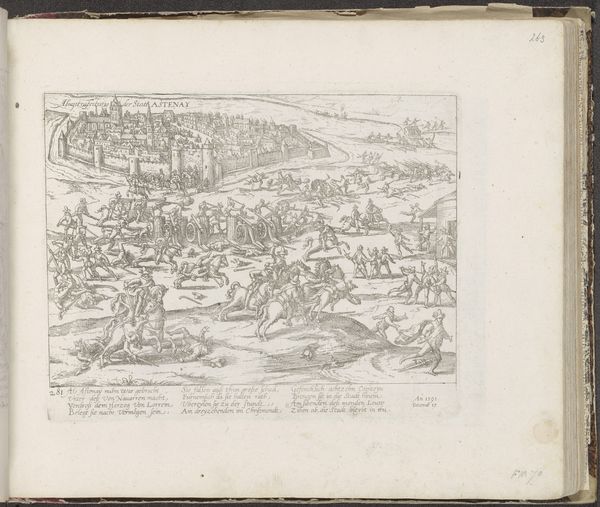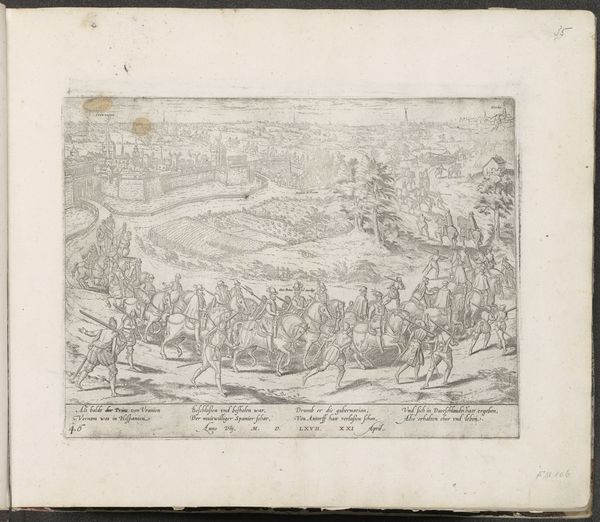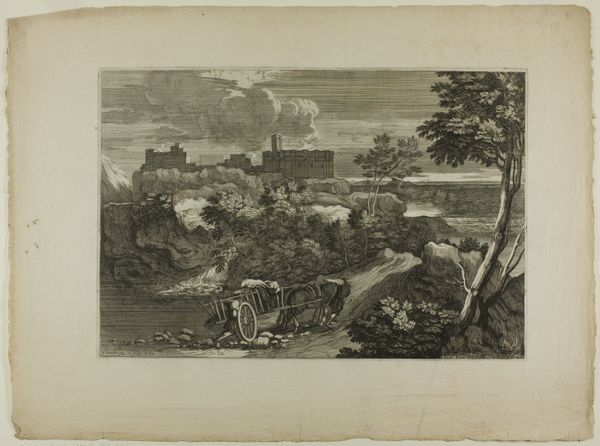
print, etching, engraving
#
baroque
# print
#
etching
#
landscape
#
cityscape
#
engraving
Dimensions: height 172 mm, width 198 mm
Copyright: Rijks Museum: Open Domain
Curator: Here we have "Gezicht op het kasteel van Franchimont," a print from 1734. This etching offers a meticulously rendered view of the Franchimont Castle. Editor: It’s so detailed for such a small scale. The castle looms, but there’s also an intimacy in the foreground with those figures by the stream. It evokes a sense of established power structures overseeing the daily life of the community. Curator: Precisely. This artwork exists as a cultural record. During the Baroque period, we often saw detailed depictions of landscapes, serving not just as scenery but also as markers of territory, wealth, and political dominance. Castles symbolized authority. Editor: I'm interested in the way the anonymous artist positions those figures though, are they working or just leisurely visiting this idyllic space? Who were these landscapes created for and who did they exclude? It's interesting to me to see the beginning of travel for leisure, seeing these spa destinations being advertised in popular imagery. Curator: Good points. Prints like these were often commissioned by or made for the aristocracy, nobles, or upper-middle-class, acting as souvenirs or displays of their travels. There's an implicit political dimension when property becomes aesthetics, and its important to note what we dont see, the reality of the working class who were excluded from these locations and their representations. Editor: Right, thinking about the people written out of the narrative or depicted merely as picturesque additions. The details like the smoking chimneys add to the illusion, of course, but it's important not to confuse artifice with the truth. It highlights how visual culture in the Baroque era contributes to particular constructions of place. Curator: In a sense, yes. These carefully framed prints offer valuable insight into how the dominant social classes perceived and wanted to be perceived by others in that time. Editor: Thank you for emphasizing this critical dimension; it's a constant reminder that art and its historical context cannot be separated. It's in questioning, investigating, and deconstructing traditional frameworks that we are able to grasp a deeper appreciation of art’s function and significance.
Comments
No comments
Be the first to comment and join the conversation on the ultimate creative platform.
